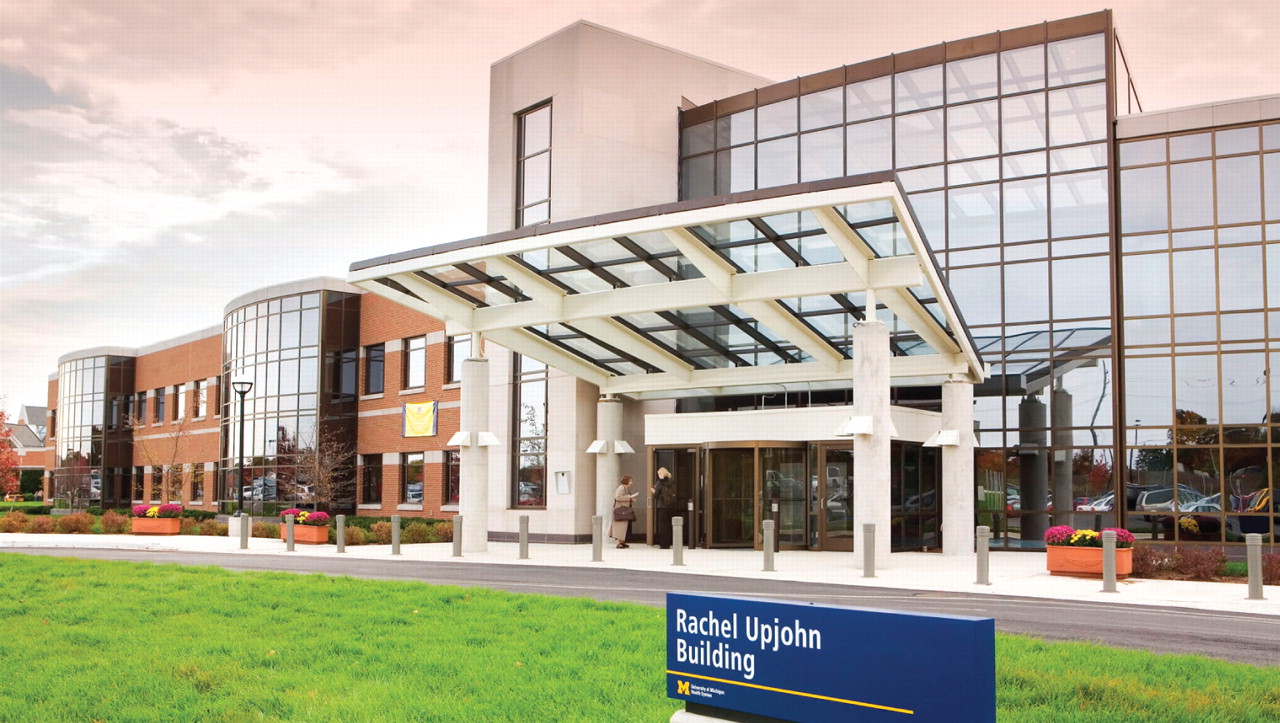Aman in his mid-40s with treatment-resistant depression arrives at the depression specialty clinic at the University of Michigan's (U-M) new, comprehensive Depression Center for what will be an all-day assessment.
He'll receive thorough psychiatric, neurocognitive, and sleep evaluations; consultation with a nutritionist; an addiction assessment; and an automated symptom-rating battery that enables follow-up monitoring. And the entire consultation will take place in a single location in the new $41-million Rachel Upjohn Building on the U-M Health System's east medical campus in Ann Arbor.
“What we are putting together is a high level of comprehensive care that will integrate all aspects of psychiatric assessment,” Melvin McInnis, M.D., director of the depression specialty clinic at the Depression Center, told Psychiatric News. “At the end of the day there is a wrap-up at the attending level to put together in one large picture all the treatment needs of this one patient.”
The specialty clinic is one component of the Depression Center, which merges basic and clinical research, education, and clinical care using a multidisciplinary approach to treat depression and bipolar disorder.
The first center of its kind in the nation, it is the brainchild of U-M Psychiatry Department Chair John Greden, M.D., and is modeled on the Comprehensive Cancer Centers now found in or around nearly every major U.S. city.
“If we look at the overall burden including costs, disability, and family consequences associated with depression and bipolar disorder, it's clear that our delivery system is not tailored to the problem,” Greden told Psychiatric News. “What we have is a system that typically picks up people who are depressed after they have had it for a long time. So they come to the psychiatrist when they are chronically and severely ill.”
Goal Is Preventing Chronicity
“The idea behind the comprehensive depression center is that we need to develop an approach that intervenes earlier and more effectively to prevent chronicity,” Greden said. “If we are going to succeed, we know that we have to overcome stigma. Learning from what has worked in other fields of health care, I found myself wondering why we don't have depression centers analogous to the cancer centers that were started 45 years ago when cancer had its own stigma to overcome.
“That approach brought together different disciplines and helped to change and improve the paradigm for cancer care,” he noted.
In 1999 Greden proposed creation of a comprehensive depression center at U-M that would cross boundaries and involve specialists from multiple disciplines— social work, nursing, pharmacy, public health, life sciences, and kinesiology and exercise, among others—as well as physicians in many specialties.
“All these specialists are involved in various ways in the Depression Center. Part of the funding was provided by NIH [National Institutes of Health] so that our research operations would also have an interdisciplinary approach,” Greden said. “Our goal is to create an integrated research, educational, clinical, and public-policy center that will enable us to find depression earlier, prevent its progression, overcome stigma, and help improve public policy
“Psychiatry is certainly the leader in this field, but if we don't approach this problem the way the cancer community did, by including people from diverse specialties, we will too often be treating the disease too late and in its most chronic period,” Greden said.
The Depression Center was founded in 2001 and now makes its home in the Rachel Upjohn Building along with treatment and research personnel of the Department of Psychiatry and faculty from other schools in the university.
Integration of Care Crucial
Past APA President Michelle Riba, M.D., has the task of integrating depression care into the treatment of patients in the general medical setting.“ My job within the Depression Center is to link depression care to patients who have comorbid medical conditions, such as diabetes, cancer, and heart disease,” she said.
“It is an amazing facility with the ability to transform how we provide clinical care and education and do research, and will be a prototype for the growth and development of other depression centers throughout the country,” Riba said. “The center is already helping to decrease stigma about depression and bipolar disorders, and through the ability to work with many departments and faculty at the university, we will be able to mount research projects that could never have been realized.”
Riba is also the zonal representative from APA to the World Psychiatric Association (WPA) and hopes to present information about the concept and utility of depression centers at future WPA meetings.
McInnis, in addition to directing the center's depression and bipolar specialty clinics, is leading an effort to understand the genetics of bipolar disorder. He and colleagues will help establish a genetic repository of individuals with and without bipolar disorder. These individuals will be followed longitudinally to identify factors that lead to—and protect against— the disorder.
Ultimately, Greden said, he hopes the depression center will serve as a model for the development of other university-based centers and as a catalyst for a consortium similar to the National Comprehensive Cancer Center Network (NCCN).
Psychiatry departments around the country are taking notice. This month, Greden and other U-M leaders will meet with department chairs from 15 institutions that are among the leaders in depression care.
“We have established some standards, and all of these institutions have met the standard,” Greden said. “The metaphor is the NCCN, and our stretch goal is to have a comprehensive depression center within 300 miles of every citizen. It may take us a few decades, but we are getting started.” ▪

